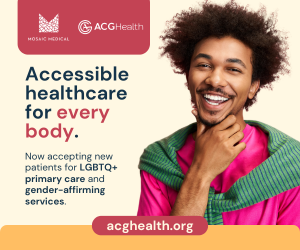A panel of the U. S. Food and Drug Administration last week took steps to advance what would be the first in-home HIV test kit.
The FDA advisory panel recommended unanimously May 15 that the agency approve the OraQuick In-Home HIV Test, made by OraSure Technologies Inc., based in Bethlehem.
The FDA is expected to announce its decision in the next few months.
The same FDA panel earlier this month recommended approval of Truvada, an antiretroviral drug thought to be effective in preventing HIV transmission through sexual contact.
If approved, the OraQuick test would be available for purchase for under $60. The test involves a mouth swab and takes about 20 minutes to complete.
The first phase of the OraQuick trial had one false positive among the more than 5,300 negative tests, with eight false negatives among the 114 positive participants, for an overall accuracy rate of 93 percent.
OraQuick is currently available to medical professionals and has a 99-percent accuracy rate when administered by professionals.
The panel said the test would diagnose about 45,000 new HIV cases each year and miss about 3,800. The board estimated that the product would prevent about 4,000 new transmissions a year.
Gary Bell, executive director of BEBASHI, said that he is overall in favor of the concept of an HIV home test, but is concerned about its reliability.
“We don’t want to give people a false sense of security, especially people who are very sexually active and may be having unprotected sex,” Bell said.
But Bell noted that any product that can “give us one more tool in our arsenal” to fight HIV is a step in the right direction.
Action AIDS executive director Kevin Burns said the cost could be prohibitive for some consumers.
“Anything that helps us identify folks who are HIV-positive and not aware of their diagnosis is a good thing but this may have a limited impact because of the cost,” he said. “But for people who have the resources to buy this and who are not currently getting tested, I think it’s a good thing.”
Having such an option could lessen the fears that some could experience in getting tested in a medical environment, said Jane Shull, executive director of Philadelphia FIGHT.
“People are reluctant to get tested in almost any setting so the more options people have, the better,” she said.
Ron Powers, executive director of Mazzoni Center, also said any effort to expand the pool of people getting tested is a good one, as long as it’s done properly.
“We believe strongly that people who are at risk for HIV should get tested. Whether they do that at a community-based site like Mazzoni Center, through their medical provider or with a take-home test, the important thing is that they know their status — then, if negative, take steps to reduce their risks or, if positive, seek appropriate medical care,” Powers said. “We cannot stress enough the importance of having support before, during and after taking the test. As long as those supports are available and the cost of the test is not prohibitive, we believe that the take-home test may be another means of getting more people tested.”
Some critics of the test have questioned, citing the accuracy rate, if regular consumers will be able to understand how to perform the test.
If the test makes it to shelves, Shull said it will be incumbent upon HIV/AIDS service providers to redouble efforts to educate consumers that the disease is treatable and about the steps that they can take to receive proper care.
Jen Colletta can be reached at [email protected].
